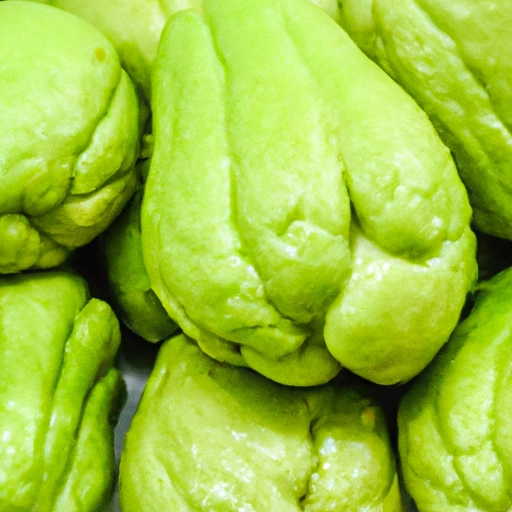Chayote
Description

Chayote, also known as mirliton squash or vegetable pear, is a gourd family (Cucurbitaceae) member, native to Mesoamerica. It is prized for its light green, pear-shaped fruit and mild, crisp flesh. Chayote is a versatile ingredient that can be eaten raw or cooked and is becoming increasingly popular in a variety of international dishes. Whether you're using ounces, grams, pounds, or kilograms, chayote fits seamlessly into recipes from any cuisine.
Common uses
Chayote is commonly used in salads, soups, stews, and as a cooked side dish. It can be sliced, diced, or shredded, making it a suitable addition to stir-fries and other mixed vegetable dishes. In some cuisines, chayote is stuffed with meat or cheese and baked, while in others, it is pickled or marinated for added flavor.
Nutritional value
Calories
A 100-gram serving of chayote contains approximately 19 calories (79 kilojoules).
Protein
Chayote provides about 0.82 grams of protein per 100 grams.
Fat
This vegetable is low in fat, with only 0.13 grams per 100-gram serving.
Carbohydrates
Chayote is composed of roughly 4.51 grams of carbohydrates per 100 grams, most of which are dietary fibers.
Vitamins
Chayote is a good source of vitamin C, providing about 7.7 milligrams per 100 grams. It also contains small amounts of the B vitamins.
Minerals
It contains essential minerals such as potassium, magnesium, and calcium. You'll find 125 milligrams of potassium, 12 milligrams of magnesium, and 17 milligrams of calcium in a 100-gram serving.
Health benefits
Due to its high water content and dietary fiber, chayote is great for digestion and can help in weight management. Its vitamin C content is beneficial for the immune system, and the presence of antioxidants may contribute to reducing inflammation and protecting against certain diseases.
Potential risks
Chayote is generally safe to consume for most people. However, individuals with a known allergy to gourds should avoid it. Additionally, due to its low-calorie and carbohydrate content, it should not be relied upon as a sole source of nutrition.
Common recipes
Chayote is featured in recipes like Creole maque choux, Filipino ginisang sayote, and Brazilian chuchu com camarão. It's used in various ways in cuisines from Asia, the Americas, and Europe.
Cooking methods
This versatile fruit can be boiled, steamed, baked, sautéed, or even microwaved. Its subtle flavor makes it an excellent carrier for spices and other flavorings.
Pairing with other ingredients
Chayote pairs well with ingredients like garlic, cilantro, tomatoes, and lime. It also complements meats such as pork, chicken, and seafood, adding texture and nutrition to any dish.
Summary
Chayote is an adaptable and nutritious ingredient that can be incorporated into a myriad of dishes. With its ability to blend into various cooking styles and its health benefits, chayote is a valuable addition to any kitchen around the world. Its global appeal and ease of preparation make it a favorite for both home cooks and professional chefs alike.